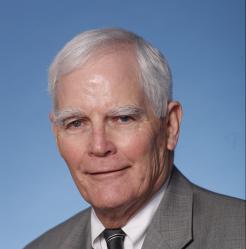The threshold for the Census Bureau’s new supplemental poverty measure, below which a family would be classified as poor, will be set based on annual expenditures on necessities—food, clothing, shelter, and utilities (FCSU)—among certain types of families. Some poverty experts argue that increases in income result in equivalent increases in expenditures on necessities, and thus, the poverty threshold will always rise together with median income. As a result, the poverty rate under this measure would not decrease unless the incomes of those at the bottom of the income distribution increase relative to those at the middle. However, other experts argue that as Americans’ incomes rise, they will spend a smaller share on necessities. If true, this would imply that the supplemental poverty threshold would not rise one-to-one with income, and the supplemental measure would not be relative.
The simplest way to test the assertion that the supplemental poverty measure is a relative measure is to plot the trend in expenditures on necessities and a trend in income across time. If the measure is relative, the FCSU trend and the income trend would likely increase at about the same rate across time. Unfortunately, data limitations preclude an ideal analysis. For one, the FCSU thresholds available use the original National Academy of Sciences (NAS) recommendations. Thus, these thresholds are based on two-adult, two-child families at the median of the distribution rather than all two-child families at about the 33rd percentile. In addition, the thresholds available are based on the average of three years of expenditures on necessities, while the new Census Bureau measure is based on the average of five years. Moreover, these data are only available across a limited range of years. The FCSU-CE threshold, which excludes mortgage principal repayment, is available between 1989 and 2008, while the FCSU threshold, which includes mortgage principal repayment (the method of the new supplemental poverty measure), is available between 1996 and 2008. Given these data restrictions, one should interpret this simple analysis with caution.
The Brookings Institution is committed to quality, independence, and impact.
We are supported by a diverse array of funders. In line with our values and policies, each Brookings publication represents the sole views of its author(s).



